Key takeaways:
- Customer-centric culture prioritizes understanding customer needs and creating genuine connections, integrating service throughout the organization.
- Empowering employees to make customer-focused decisions enhances service quality and boosts team morale.
- Engaging customers through feedback forums and personalized interactions fosters loyalty and strengthens brand advocacy.
- Measuring the impact of customer-centric changes is crucial, highlighting the importance of clear success metrics before implementation.
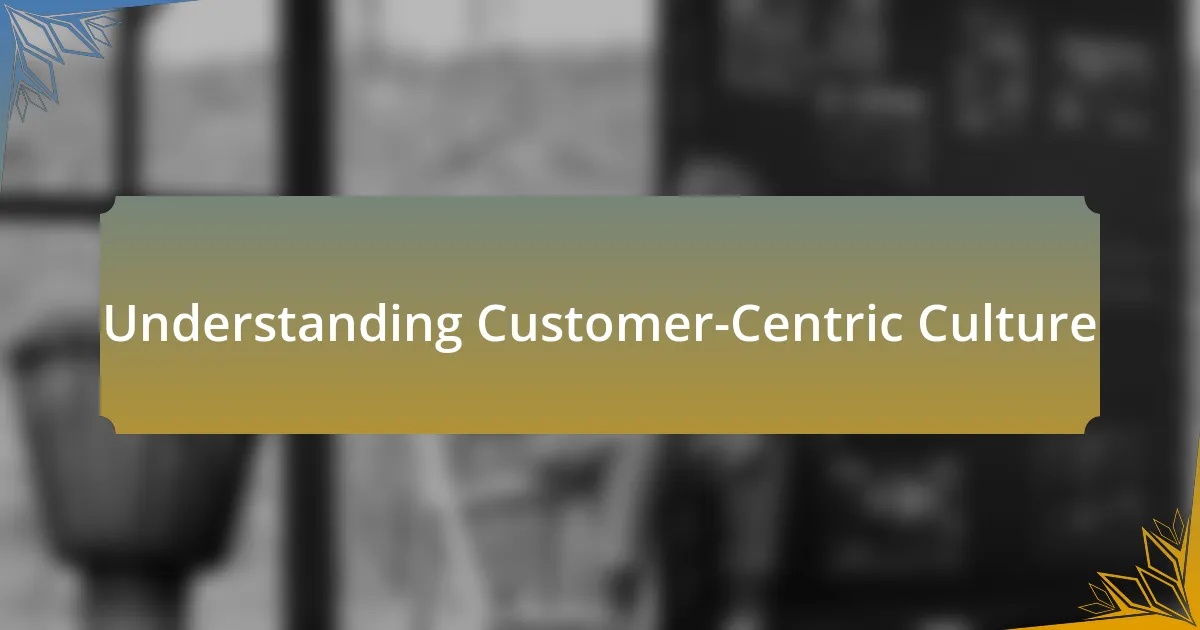
Understanding Customer-Centric Culture
At its core, a customer-centric culture is all about prioritizing the needs and experiences of customers above all else. I remember a time when I was part of a team that redesigned our service protocols based solely on customer feedback. The transformation was remarkable, and it made me realize how deeply understanding our customers can shift an entire organization’s mindset.
Being customer-centric means building deep empathy for those we serve. I believe it’s about more than just addressing complaints; it’s about creating genuine connections. Have you ever engaged with a service rep who truly empathized with your issue? That human touch shouldn’t be a rarity. It should be at the forefront of every interaction.
Many businesses still treat customer service as a separate entity, rather than integrating it throughout their operations. This disconnection can hinder growth and loyalty. I’ve seen firsthand how involving every team member in the customer experience narrative fosters a sense of ownership and accountability. Isn’t it powerful when every voice in the organization aligns with the goal of delighting customers?
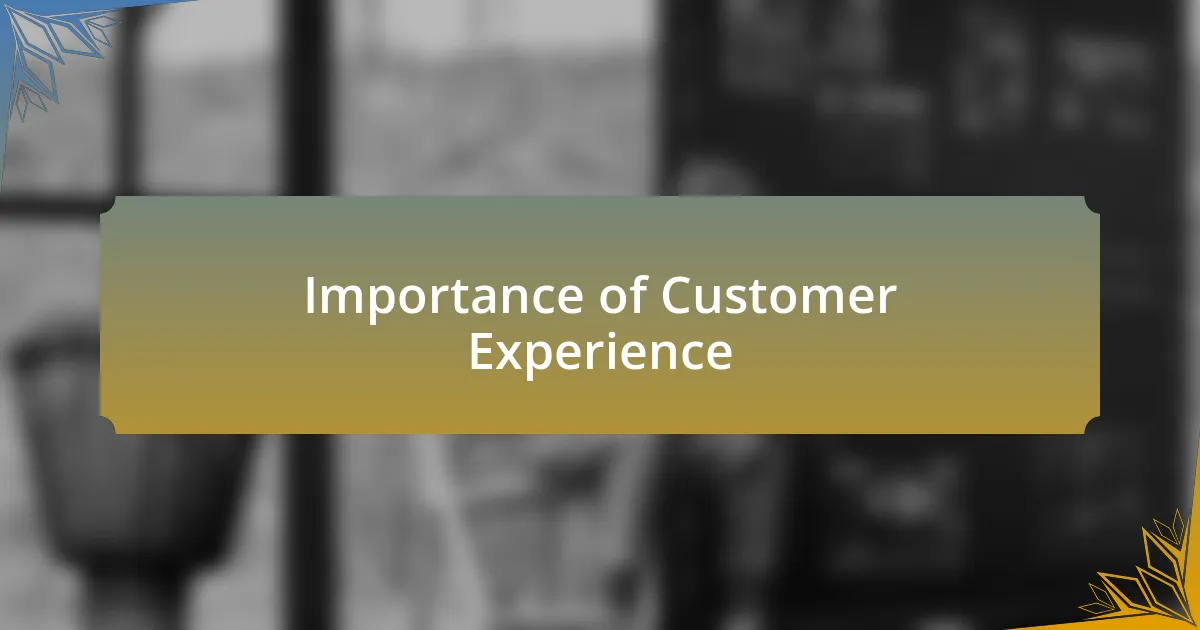
Importance of Customer Experience
Customer experience isn’t just a buzzword; it’s the heart of any successful business strategy. I recall a project where we analyzed the customer journey. The insights we gained revealed not just where we were falling short but also where we had unique opportunities to connect with our audience. Have you ever thought about how a single positive interaction can transform a customer’s perception of a brand?
The emotional impact of a stellar customer experience remains etched in my memory. I once received a handwritten note of thanks from a company after experiencing a minor issue with my order. It wasn’t about the resolution itself; it was about the thoughtful gesture that made me feel valued. Momentary problems can be forgotten, but exceptional customer experiences create lasting loyalty.
Furthermore, a focus on customer experience can be a game changer for brand reputation. I’ve witnessed brands that thrive simply due to their commitment to understanding and addressing customer needs. When companies invest in creating memorable experiences, inspired customers often become the best advocates, spreading the word organically. Isn’t it fascinating how a loyal customer base can drive growth and innovation, all starting from a place of empathy?

Key Elements of Customer-Centricity
One of the key elements of customer-centricity is deep understanding. In my experience, truly knowing your customers goes beyond basic demographics; it’s about diving into their motivations and pain points. I remember conducting a series of customer interviews that illuminated specific frustrations; it was a game-changer for how we tailored our services. Have you ever sat down and genuinely listened to what your customers are feeling?
Another crucial aspect is personalization. I’ve seen firsthand how small touches, like recommending products based on previous purchases, can make customers feel recognized and appreciated. For example, when a retailer sent me personalized recommendations after considering my browsing history, I felt a sense of belonging. It’s incredible how these personalized experiences can foster loyalty, right?
Lastly, empowerment plays a vital role in nurturing a customer-centric culture. I once worked with a team that encouraged employees to make decisions that prioritize customer satisfaction, even if it meant deviating from standard procedures. This flexibility not only boosted team morale but also led to happier customers, proving that when you give your employees the freedom to act in the customer’s best interest, everyone wins.
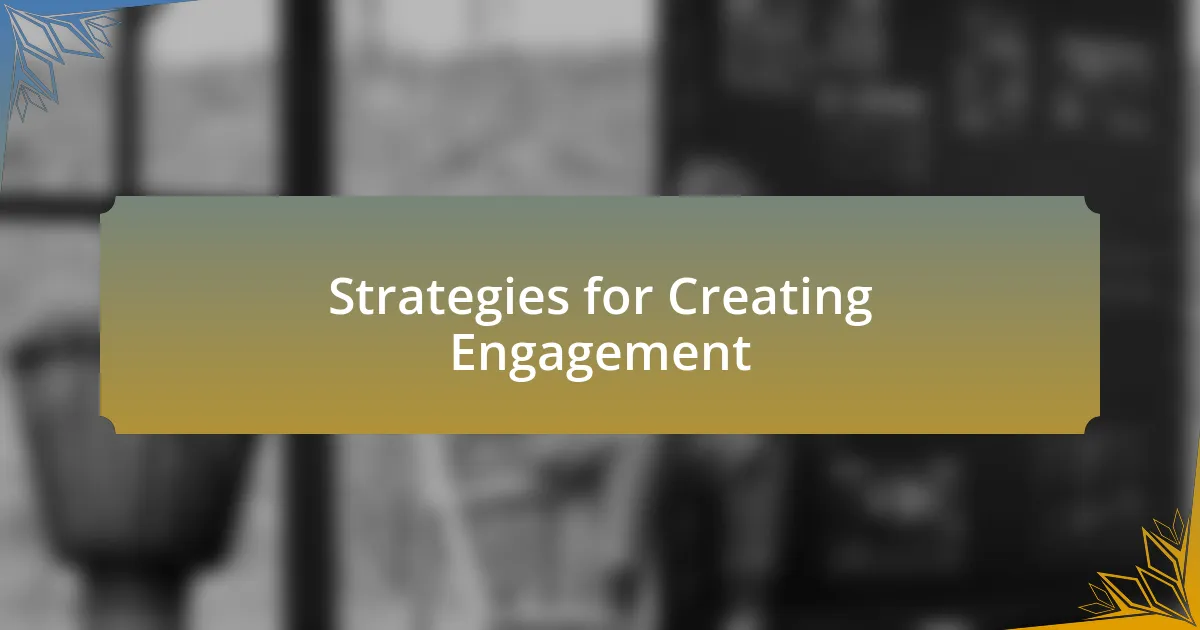
Strategies for Creating Engagement
Engaging with customers starts by creating spaces for open dialogue. I remember launching a feedback forum where customers could share their thoughts and suggestions. This initiative not only made them feel valued but also introduced ideas we never considered. What if we empowered our customers to shape our strategies?
Another effective method is utilizing social media to build connections. I experienced a memorable campaign where we invited customers to share their stories related to our product. The response was overwhelming, as it turned into a sense of community, with users supporting one another. Can you imagine the level of loyalty that develops when customers become advocates for your brand?
Finally, incorporating gamification into customer interactions can significantly boost engagement. It was fascinating to see how introducing a point system for feedback and referrals turned mundane tasks into fun challenges. I watched as participation and enthusiasm surged, with customers excited to earn rewards. Have you ever considered how a little competition can transform customer experiences?

Real-Life Examples of Success
One of the most compelling examples I’ve witnessed was at a company where they shifted their focus entirely to customer feedback. They established a dedicated team to analyze customer insights seriously. I remember attending a meeting where someone shared a piece of feedback that led to a major product redesign. The joy on that customer’s face when they saw their suggestion implemented was priceless. Can you imagine how empowering it feels for customers to know their voice directly influences the brand?
In another instance, a company I consulted for took a unique approach by hosting customer appreciation events. They wanted to turn their transactional relationships into genuine connections. I attended one of these events and saw firsthand how customers were not just sharing smiles but also heartfelt stories about how the product changed their lives. This emotional connection transformed those customers into lifelong advocates. What would it mean for your business if customers felt that deeply connected?
Lastly, I recall a startup that introduced personalized interactions through technology. They deployed a chatbot, but with a twist: it was designed to mimic human conversation closely. During a session I facilitated, we reviewed customer interactions, and it was moving to see how many users expressed gratitude for the assistance they received. This approach demonstrated that technology, when designed thoughtfully, could enhance the customer experience profoundly. How could integrating personal touches into technology elevate your customer approach?
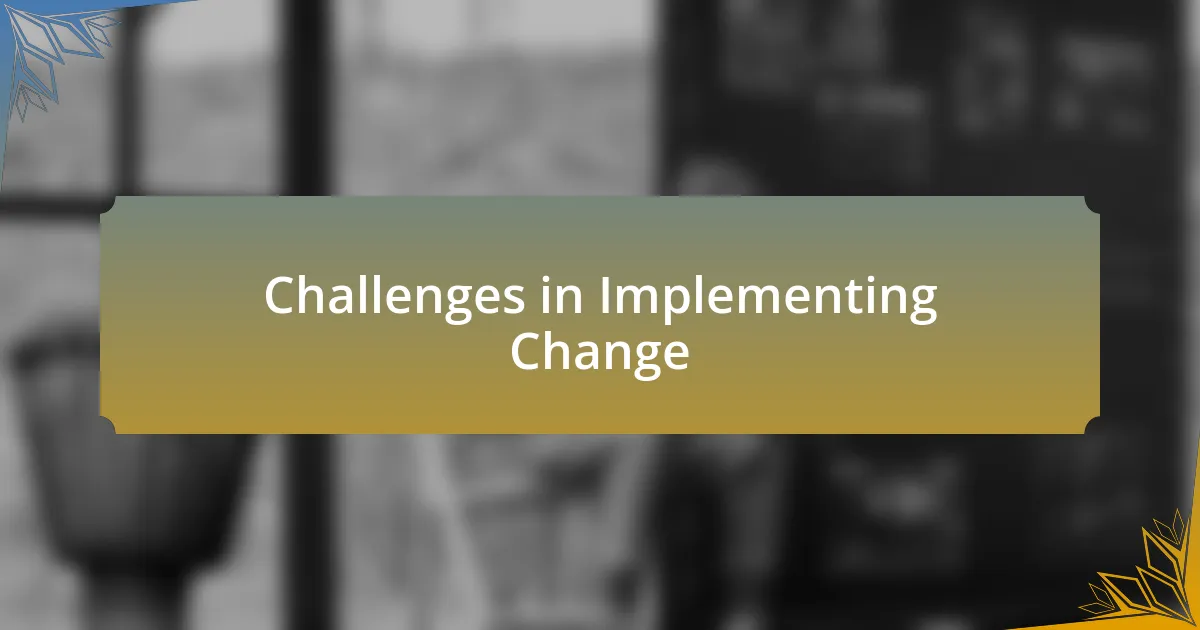
Challenges in Implementing Change
Implementing change often encounters significant resistance, and I’ve seen this firsthand in organizations. During a project to revamp a customer service training program, I faced pushback from long-standing employees who felt threatened by new approaches. It was a turning point for me; I learned that addressing emotional concerns is just as important as highlighting the benefits of change. Have you ever wondered why some team members resist change even when it could lead to better outcomes?
Another challenge I recall involved aligning different departments toward a common customer-centric vision. I once facilitated a workshop, hoping to bridge the gap between marketing and sales, but quickly realized how siloed they had become. Conversations turned into debates, with each side defending their priorities instead of collaborating. It made me appreciate the complexity of communicating a unified message—how can you ensure everyone is on the same page when it feels like they are pulling in different directions?
Finally, measuring the impact of these changes can be a daunting task. In a previous role, we launched a new feedback system, but interpreting the data proved tricky. I remember feeling overwhelmed by the volume of information, unsure how to evaluate success. This struggle led me to reflect on one crucial question: isn’t it vital to have clear metrics in place before initiating change? Without them, how can we truly know if we’re making a positive difference for our customers?
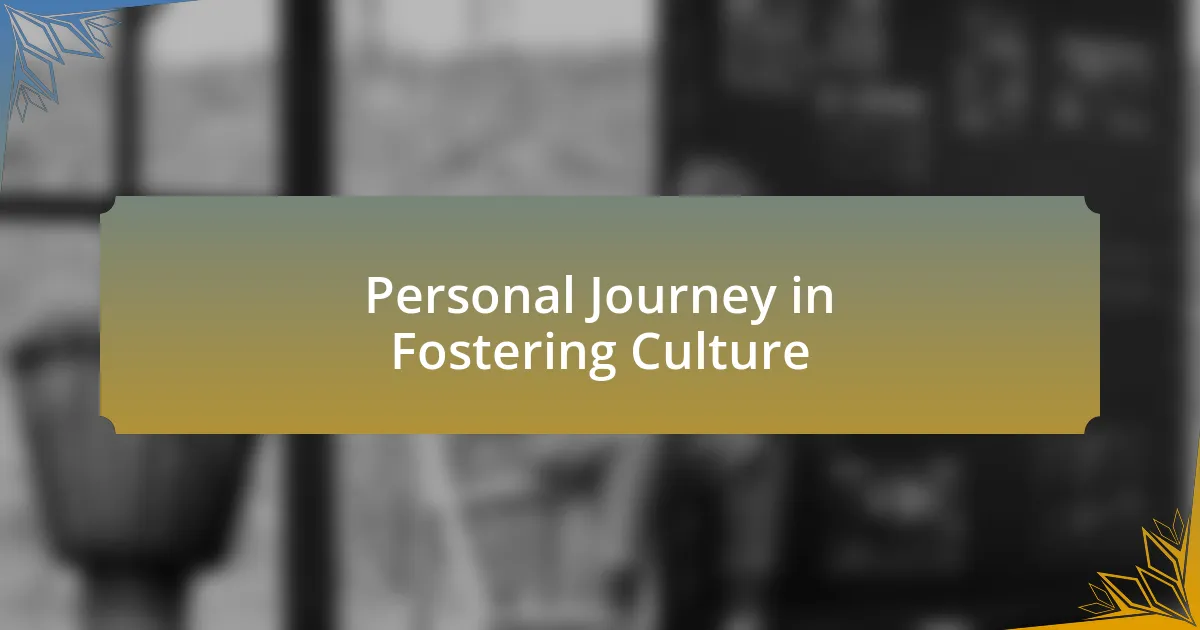
Personal Journey in Fostering Culture
Embarking on my journey to foster a customer-centric culture was as much about introspection as it was about action. One pivotal moment for me occurred during a quarterly meeting where I realized our executives were disconnected from the front-line staff. I took the initiative to organize “listening sessions” with customer service representatives. I remember sitting in those sessions, feeling the raw passion and frustration of my team as they shared their experiences. It struck me how vital it is for leaders to not only listen but actively engage with their employees—how else can we champion a culture if we don’t truly understand their challenges?
One particularly enlightening experience was when I sat across the table from a frustrated customer who had experienced repeated issues with our service. It was uncomfortable. Yet, hearing their pain points firsthand was transformational for me. It underscored the importance of empathy in service recovery. It led me to rethink how we could weave customer stories into our training sessions. Can a simple narrative shift our approach and humanize our customer interactions? I came to believe that storytelling could bridge gaps between departments and foster a deeper understanding of our customers’ needs.
As I navigated this path, I recognized the significance of celebrating small wins. I initiated a monthly recognition program where team members shared success stories of customer interactions that made a difference. The enthusiasm in the room during those sessions was palpable. I began to see the culture shift; colleagues started taking pride in their contributions, realizing that their work profoundly impacted our customers. What better way to strengthen a customer-centric mindset than by highlighting the everyday heroes among us?